Chapter 7: Housing & Sustainable Communities
|
Strategic Objectives |
|---|
|
7.0 Introduction
Access to adequate, safe and affordable housing is the first indicator of the 11th Sustainable Development Goal. Housing is necessary because it allows people to lead healthy, secure, productive and dignified lives. A sufficient supply of adaptable, affordable, low-carbon, climate-resilient housing is critical to ending poverty and supporting economic development across Waterford.
The population of Waterford has been growing steadily for a number of years, and over the next 20 years Waterford is projected to have a population of 153,000. To support this growth, and to create sustainable communities, the best use of infrastructure and increased levels of housing delivery, as well as being consistent with national and regional policy, requires that at least 50% of housing must be provided in Waterford City and Suburbs, and at least 30% of housing in other settlements across the County, within their existing settlement footprints. The Council will also promote and facilitate the use of publicly owned lands in the delivery of a mix of tenures, including private housing, social housing, affordable purchase and affordable rental housing. It is important to note that housing delivery must also accord with the provisions of the Core Strategy as set out in Chapters 2 and 3 which sets out the appropriate locations for future development across Waterford, as also informed by the NPF and RSES.
The Council’s role is to guide the location, nature and quality of new housing developments in the city and county area, and to comply with its statutory obligations to ensure housing developments conform to relevant Government guidelines.
Housing delivery should not simply be a matter of providing new residential units; rather it should result in the provision of new and/or enhanced communities and neighbourhoods. The focus of developments must be to create areas of a high-quality design which includes the creation of sustainable, compact, accessible, attractive, healthy and multifunctional places in which to live with an appropriate mix, type and range of units. This chapter provides the spatial planning policy framework and objectives to deliver sustainable housing throughout Waterford.
|
General Housing Policy Objectives |
|
|---|---|
|
H 01 |
To promote compact urban growth through the consolidation and development of new residential units on infill/ brownfield sites and mews and townhouse developments and support the most efficient use of publicly owned lands for residential and mixed-use developments. This will be achieved through working in collaboration with landowners, the Land Development Agency, The Housing Agency and other statutory and voluntary agencies and by the utilisation of available funding (URDF and RRDF) for plan and nature-based infrastructure led development. |
|
H 02 |
In granting planning permission, we will ensure new residential development:
|
|
H 03 |
We will require that new development be in accordance with the principles of Universal Design and the National Disability Authority’s publication ‘Building For Everyone: A Universal Design Approach’ and shall have regard to the Government’s ‘National Disability Inclusion Strategy 2017-2021’. |
|
H 04 |
We will promote and facilitate sustainable and liveable compact urban growth through the thoughtful consolidation and of infill/ brownfield sites in a way which promotes appropriate levels of compactness while delivering healthier and greener urban spaces and residential amenities. This will be achieved by:
|
7.1 Regeneration and Active Land Management
The National Planning Framework and the Southern Regional Spatial and Economic Strategy identify ‘Compact Growth’ as the means to deliver sustainable growth in our urban settlements. The Council is committed to consolidation, redevelopment and regeneration of infill, brownfield, underused, vacant and/or derelict sites within the existing urban footprints, rather than the continued sprawl of urban development into the open countryside. Appendix 21 of the Development Plan identifies a range of regeneration/ opportunity sites across all settlement classes which could be developed during the lifetime of the Plan and beyond through active land management or other means.
|
Regeneration Policy Objectives |
|
|---|---|
|
H 05 |
To maximise the efficient use of existing infrastructure and services and promote a positive modal shift towards sustainable transport use, we will facilitate the sustainable, compact, sequential regeneration and redevelopment of urban areas through the appropriate development of identified key infill and brownfield sites as per Table 3.2 and Appendix 21 for a mix of uses appropriate to the location. To assist in this regard, we will carry out a viability assessment for key brownfield sites during the lifetime of the development plan with a view to assisting in delivery of regeneration projects. Development proposals which are not fully consistent with the provisions of the land use zoning matrix (Volume 2 – DM Standards Table 11.2) will be considered on their own merits where it can be demonstrated that the proposed development is consistent with the ‘Vision’ for the site, and is in accordance with the proper planning and sustainable development of the area. |
|
H 06 |
We will utilise our legislative power under the Derelict Sites Act 1990, The Urban Regeneration and Housing Act 2015, as amended and general CPO powers to prevent anti-social behaviour and remove dereliction and vacancy where appropriate. |
7.2 Housing Need and Demand Assessment and Housing Strategy
In order to ensure that the plan-making system is supported by a robust methodology to inform housing related policy outputs and the Council’s Housing Strategy, and funding relating to housing provision, and associated land requirements, a Housing Need Demand Assessment (HNDA) has been developed, please refer to Appendix 3. The purpose of the HNDA is to:
- Assist local authorities to develop long-term strategic views of housing need in Waterford across all tenures.
- Provide a robust evidence base to support decisions about new housing supply, wider investment and housing related services that inform our local and an overall national housing profile.
- Inform policies relating to the proportional and other requirements for social and affordable housing, including the locational demand and need for different types and sizes of provision.
- Provide evidence to inform policies related to the provision of specialist housing and housing related services.
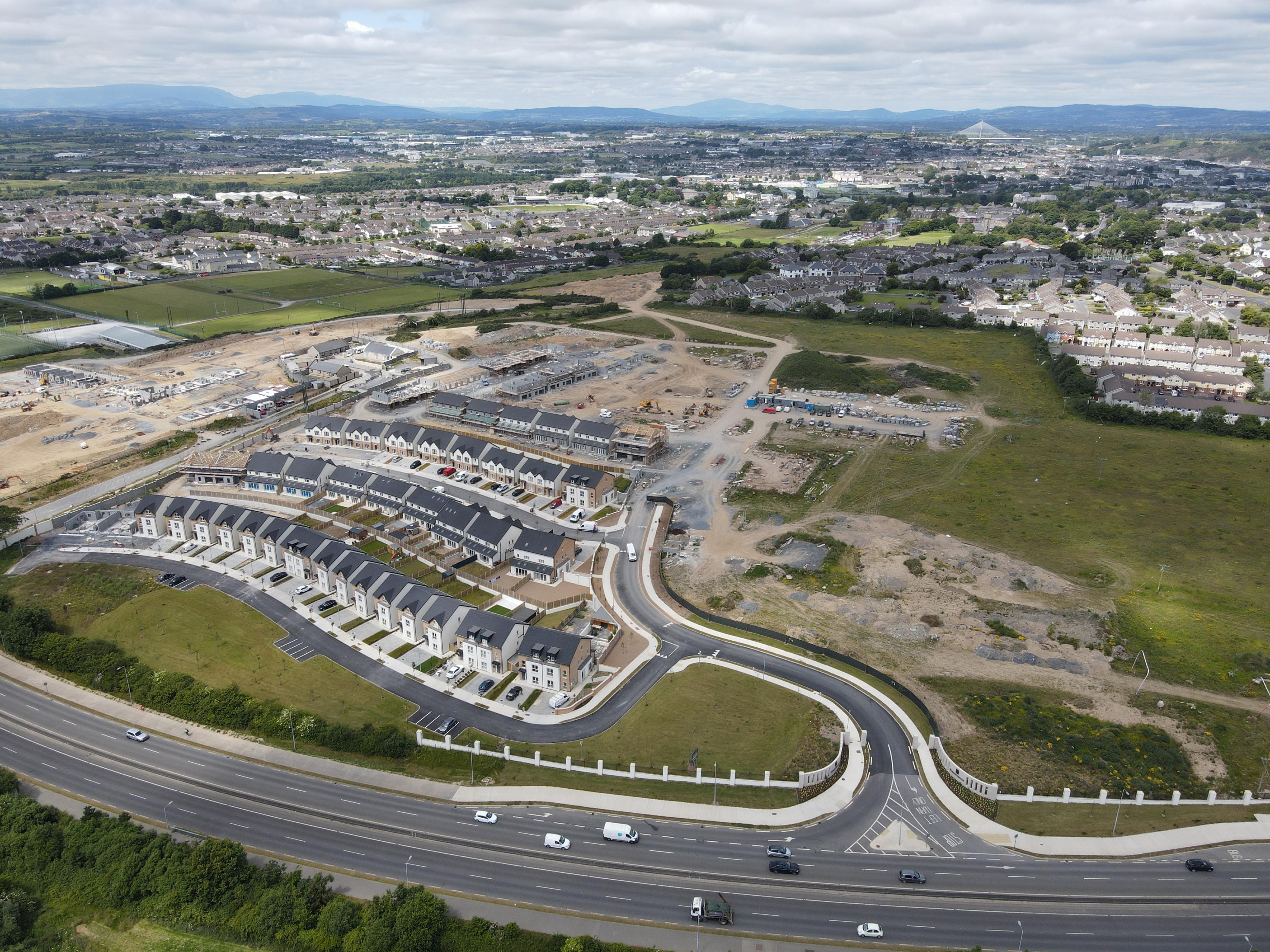
|
Housing Strategy and Housing Need and Demand Assessment Policy Objectives |
|
|---|---|
|
H 07 |
We will secure the implementation of the Waterford City and County Housing Strategy and Housing Need and Demand Assessment (HNDA) in accordance with the provision of national legislation and relevant policies and standards through:
|
7.3 Social Housing and Part V
Social and Affordable housing will be provided by Waterford City and County Council as the Housing Authority, Approved Housing Bodies (AHBs), The Land Development Agency and by a wide range of mechanisms, including under Part V of the Planning and Development Act 2000 (as amended).
A recent significant change to Part V arrangements under the Affordable Housing Act 2021 is to increase the Part V contribution for new housing developments from up to 10% for social housing to a mandatory 20% requirement of new developments of 5 or more houses, at least half of which must be applied to social housing provision and up to half of which may be applied to affordable and cost rental housing.
All proposed residential developments, or mixed used development with a residential component, shall have regard to, and comply with, the provisions of the Council’s Housing Strategy (Appendix 3 of the Development Plan) and Part V of the Planning and Development Act, 2000 (as amended). In this regard, an applicant for new development will be required to engage with the Planning Authority at an early stage of the planning process to ascertain any specific requirements in relation to their Part V obligation.
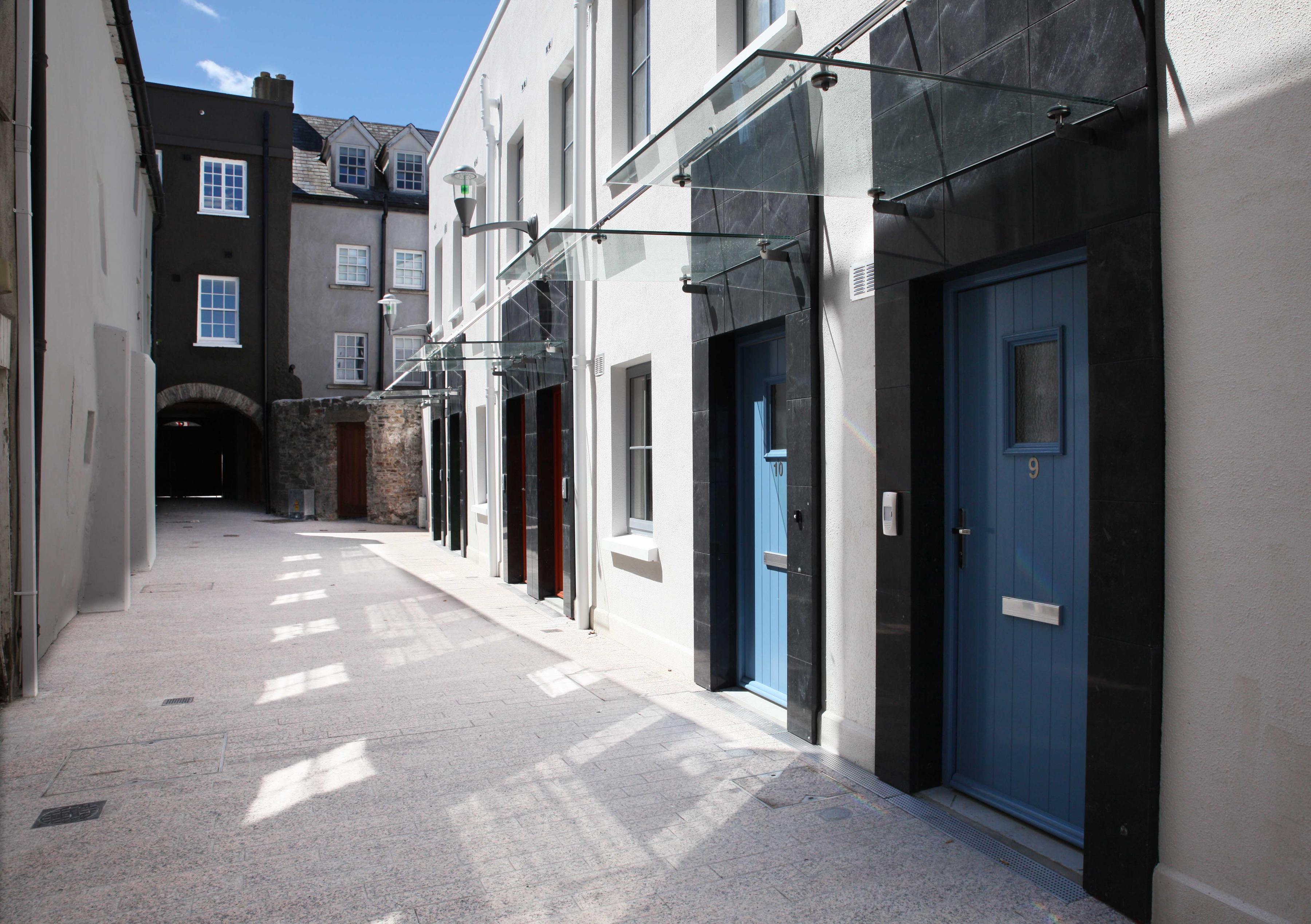
While the Housing Strategy has found that the identified social and affordable housing requirement is equivalent to c.30% of the total anticipated households in County Waterford over the Plan period, the NPF warns against the intensification of social housing in areas that are already dense with social housing and advocates for the development of diverse neighbourhoods with a balance of public and private housing to create healthy communities.
In order to mitigate against undue segregation of tenure type, new developments should avoid an over proliferation of a single housing tenure by providing a balanced mix of private, affordable, social and cost rental housing to accommodate the needs of a mixed and balanced community. In this regard, applicants shall be required to have regard to both the existing and permitted house types and tenures within the surrounding and adjoining neighbourhoods and/or district and clearly demonstrate how the proposed development will add to the housing mix of the area.
In areas where the relevant deprivation rate is below -3.0 as set out in Table 5.8 of the Housing Strategy & HNDA (Appendix 3) the preference of the Council is to promote a higher rate of private, affordable and cost rental housing as opposed to the provision of an excess of social housing in these areas.
In addition, all development proposals with a residential component, shall comply with the policies set out in this chapter with regard to providing appropriate housing choice, location, mix and tenure.
|
Social Housing and Part V Policy Objectives |
|
|---|---|
|
H 08 |
The Council will secure the provision of appropriate accommodation to meet the housing needs of all households, including social, affordable and cost rental housing, in a manner consistent with the Housing Strategy and in accordance with Part V of the Planning & Development Act 2000 (as amended). All housing units delivered by way of Part V should be integrated into the overall development in terms of location, design and build quality. |
7.4 Voluntary, Co-operative/ Community Housing Organisations
Voluntary housing bodies provide accommodation to meet the special housing needs such as those of the older people, people with disabilities, homeless persons or small families. The Council recognises the important role, resources and experience that voluntary housing organisations and the co-operative sector brings to the housing of these groups.
The Co-operative / Community Housing model is widely seen as an approach to complement state and local authority-led public housing schemes, going beyond the simple provision of primary housing needs. They have typically been driven by motivations including affordability, a longing for community life, and social inclusion as well as progressive agendas around gender equality, environmental sustainability and demographic transition.
A number of community-related projects have been initiated in Tramore through the Tramore Development Trust (TDT). These include renovation and redevelopment of the old Coast Guard building and the old Quaker Meeting House building, as well as a sheltered housing scheme. Such initiatives followed a series of public meetings and community engagement events held in 2000/ 2001, which identified a number of community focus areas and types of interventions/ initiatives.
|
Voluntary, Co-operative/ Community Housing Organisations Policy Objective |
|
|---|---|
|
H 09 |
We will support voluntary housing associations and the co-operative / community sector in the provision of affordable housing at appropriate locations and to further develop relationships with these organisations over the period of the Development Plan. |
7.5 Housing for All
The Council will continue to ensure that housing for persons with specific requirements are met in a manner which suits their physical, social and cultural needs.
Older People
Ageing population and the need to provide suitable accommodation for older people has been recognised in the NPF and the RSES. In response to this, the Department of Housing, Planning and Local Government and the Department of Health published a Policy Statement in 2019 – ‘Housing Options for Our Ageing Population’. The Council will facilitate the implementation of the Policy Statement and promote the appropriate provision of housing for older people in Waterford.
In order to provide appropriate housing for older people throughout the City and County, the Council will work closely with other housing bodies and agencies associated with the provision of housing for older people and/or assisted living accommodation and will have regard to provisions set out within the Waterford Age Friendly Strategy.
The Council will support proposals for accommodation for older people when located in existing residential areas well served by social and community infrastructure and amenities such as footpath networks, local shops and public transport in order not to isolate residents and allow for better care in the community, independence and access.
Persons with a Disability
Location is vital when considering housing for persons with a disability. Access to public transport, local community services and facilities are significant factors in improving quality of life. In terms of housing design, compliance with Part M of the Building Regulations expands options available to persons with a disability.
The Council will support development which provides respite and/or residential care at appropriate locations and zonings throughout the County.
Homeless
The Council will continue to work in conjunction with voluntary housing bodies and other agencies to provide emergency accommodation for the homeless and those who find themselves in need of crisis facilities.
Traveller Accommodation
The Council will continue to update its accommodation programme for the Travelling Community as set out in the Council’s ‘Traveller Accommodation Programme 2019 – 2024’ (TAP). The TAP sets out a four-tier approach to the provision of accommodation, including through casual vacancies, refurbishment and extension of existing units, standard housing and construction of new units and development of new sites.
|
Housing for All Policy Objective |
|
|---|---|
|
H 10 |
We will ensure that groups with specific housing needs such as older people, people with disabilities, the homeless, refugees and members of the Travelling Community are accommodated in a manner that is suitable to their specific needs. We will provide access for these groups to an appropriate range of housing and related support services, delivered in an integrated, sustainable manner which promotes equality of opportunities, individual choice and independent living where possible. |
|
H 11 |
We will support the provision of housing for older people by providing accommodation in central, convenient and easily accessible locations which facilitate independent living where possible. |
|
H 12 |
We will facilitate independent living for people with disabilities and older people by supporting the adaptation and retrofitting of existing houses, to ensure they are more environmentally safe and less costly, and the provision of specific purpose-built accommodation, the provision of nursing homes, retirement villages, residential care facilities at appropriate locations in towns and villages. These facilities should be serviceable by infrastructure and amenities including accessible footpaths, local shops and public transport in order to allow the resident to be socially included and to allow better care in the community, independence and access. |
|
H 13 |
We will support the development of new nursing homes, retirement villages, and residential care facilities within our settlements. We may facilitate their development outside of an existing settlement only where the site is located adjacent to or in close proximity to a settlement, the development would not impact adversely on traffic or public safety, the development is serviceable by way of public water and waste water services, the design and scale of the facility is suitable for the location and there are existing or planned accessible pedestrian linkages to the settlements and its services. |
|
H 14 |
We will have regard to the National Housing Strategy for Disabled People 2022-2027 and implement the strategic aims of this strategy and any future update thereof. |
|
H 15 |
We will support and prioritise the provision of homeless accommodation and/or support services throughout the City and County in collaboration with the HSE and other voluntary agencies. |
|
H 16 |
We will implement the ‘Traveller Accommodation Programme 2019- 2024’ (and any superseding programmes) in accordance with the principles of proper planning and sustainable development. |
7.6 Housing Type & Tenure Mix
The Planning and Development Act 2000, as amended, requires Development Plans to take into account the need to ensure that an appropriate mixture of house types, sizes and tenures is developed to reasonably match the requirements of different categories of households and the demographics of an area.
The HNDA undertaken as part of the Development Plan formulation process (refer to Appendix 3) provides a detailed analysis of the demographic and housing requirements in Waterford. It highlighted that whilst Waterford has a high level of retired families; it has displayed an increase in the inter-censal period 2011 – 2016 of the 40 - 46 age cohort, an increase in children under five. This provides an indication of the need to plan and cater for all ages across the family life-cycle, and an associated requirement for a variety of residential types and sizes to provide adaptability, flexibility, and choice of residential options, and to create sustainable and liveable neighbourhoods and communities.
Providing an appropriate mix of house types creates neighbourhoods for people of different ages, social background, lifestyles and promotes inclusion and quality of life. Encouraging good housing mix also allows people the choice and opportunity to remain in a given area while availing of accommodation that caters to their changing needs at particular stages of their life. This concept is explained as the ‘Lifecycle Approach’ and is a core objective underpinning the Department of Environment, Heritage and Local Government guidelines ‘Delivering Homes, Sustaining Communities’ (2007). This approach helps foster a greater sense of community and fosters increased social inclusion.
Figure 5.5 of the Housing Strategy & HNDA (Appendix 3)identifies that housing will be needed to provide for the household sizes set out in Table 7.1 below during the period of the Development Plan 2022-2028. Applications for residential development will be required to demonstrate how the development will contribute to meeting these housing requirements.
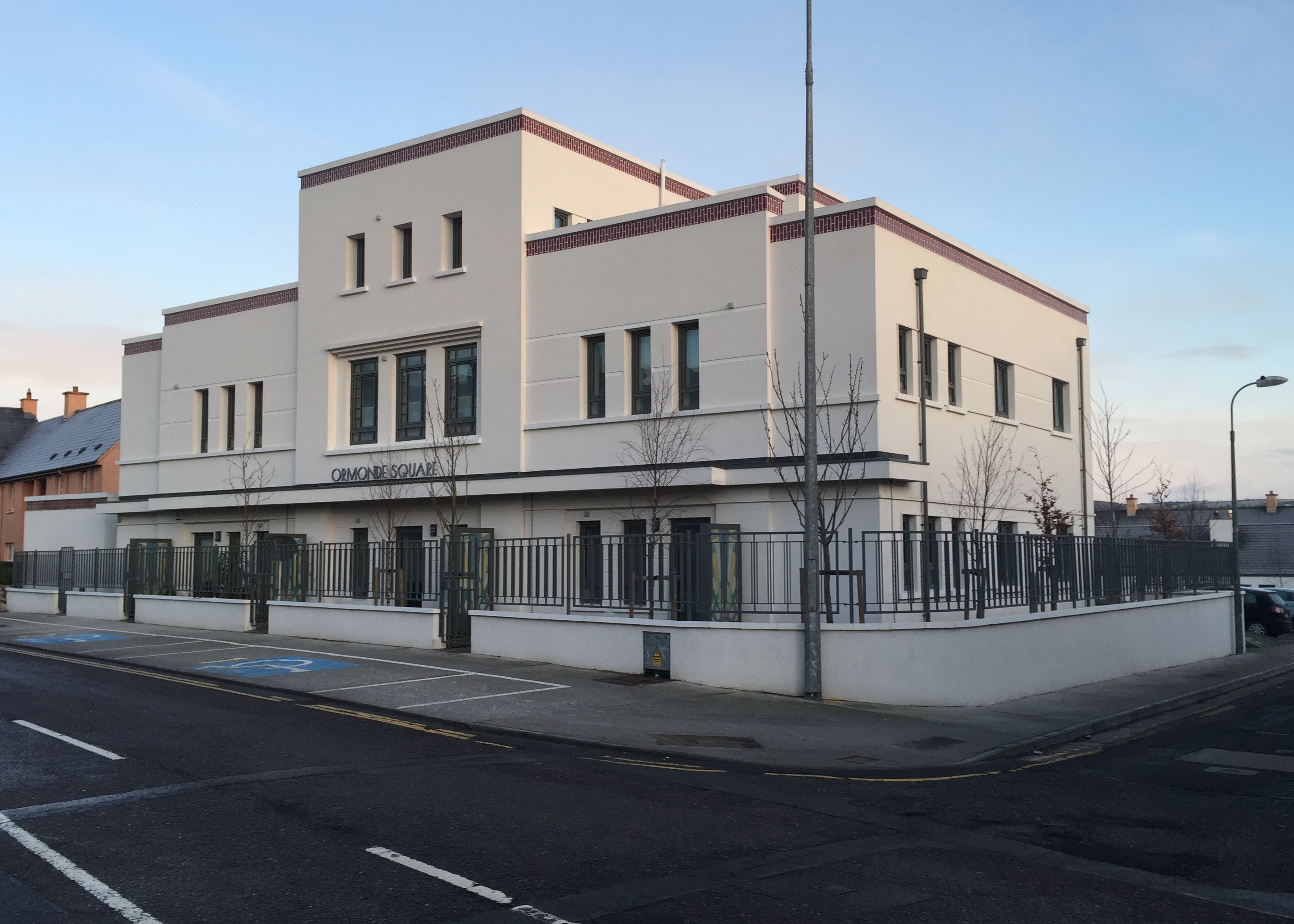
|
Table 7.1 Forecasted household size cohorts and corresponding number of residential units required during the plan period |
|||||||||||||||
|---|---|---|---|---|---|---|---|---|---|---|---|---|---|---|---|
|
Year |
2022 |
2023 |
2024 |
2025 |
2026 |
2027 |
2028 |
|
|||||||
|
Household Size |
No |
% |
No |
% |
No |
% |
No |
% |
No |
% |
No |
% |
No |
% |
Total |
|
1-person |
124 |
26.7 |
192 |
26.8 |
225 |
26.9 |
218 |
27.0 |
215 |
27.1 |
215 |
27.3 |
115 |
27.3 |
1304 |
|
2-person |
140 |
30.1 |
216 |
30.2 |
253 |
30.3 |
245 |
30.4 |
242 |
30.4 |
241 |
30.5 |
129 |
30.6 |
1466 |
|
3-person |
76 |
16.5 |
118 |
16.4 |
137 |
16.4 |
131 |
16.3 |
129 |
16.3 |
128 |
16.2 |
68 |
16.1 |
787 |
|
4-person |
71 |
15.3 |
110 |
15.2 |
128 |
15.2 |
123 |
15.2 |
120 |
15.1 |
120 |
15.1 |
64 |
15.1 |
736 |
|
5+person |
53 |
11.4 |
80 |
11.2 |
92 |
11.1 |
89 |
11.0 |
86 |
10.9 |
86 |
10.8 |
45 |
10.8 |
531 |
|
Total |
464 |
100 |
716 |
100 |
835 |
100 |
806 |
100 |
792 |
100 |
790 |
100 |
421 |
100 |
4824 |
In relation to the mix and type of apartments within large developments, the Sustainable Urban Housing: Design Standards for New Apartments (2018) set out the need for development to provide a mix of types/sizes and we will apply these design standards to support the building of resilient residential developments. In this regard we will seek to move away from the traditional single housing tenure type in housing developments and developers will be required to have regard to the HNDA when designing housing mix and tenure.
|
Housing Mix Policy Objectives |
|
|---|---|
|
H 17 |
We will encourage the establishment of attractive, inclusive and sustainable residential communities in existing built up areas and new emerging areas by:
|
7.7 Climate Resilient Housing
Climate Change represents the most serious threat to human life and our environment. However, small actions taken locally could have a significant impact on reducing risk and enhancing the resilience of our housing stock to climate change. Such actions include retrofitting existing building stock through measures such as water retention, micro-generation, increased energy efficiency heating and cooling, NZEB (nearly zero energy building).
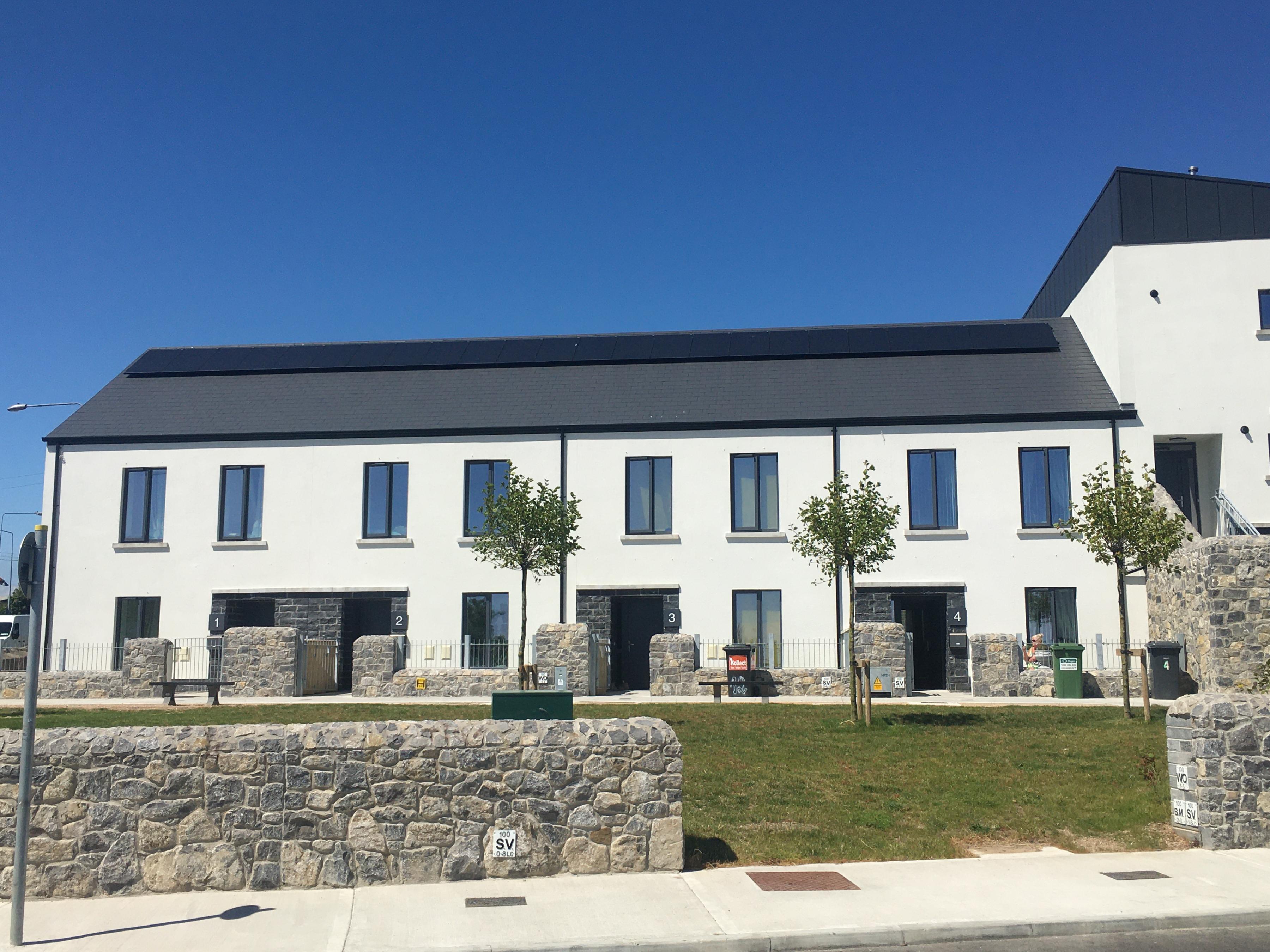
|
Climate Resilient Housing Policy Objectives |
|
|---|---|
|
H 18 |
We will require all new residential development to incorporate the following measures to enhance climate resilience:
We will also encourage the application of new NZEB (nearly zero energy building) standards to all new residential dwellings (Houses and apartments) as per the Climate Action Plan 2021 and Building regulations applicable at the time |
|
H 19 |
We support the continuous upgrading/ retrofitting of all existing housing stock (private and public), and other Council owned building in assisting in energy reduction and a just transition to a low carbon climate resilient society in a manner consistent with our Climate Adaptation Strategy. |
7.8 Protection of Existing Residential Amenity
|
Protection of Existing Residential Amenity Policy Objectives |
|
|---|---|
|
H 20 |
Where new development is proposed, particularly on smaller suburban infill sites (< 1 ha in area) we will ensure that the residential amenity of adjacent residential properties in terms of privacy and the availability of daylight and sunlight is not adversely affected. We will support lower density type development at these locations. We will require that new development in more established residential areas respect and retain, where possible, existing unique features which add to the residential amenity and character of the area, such features include front walls, gates, piers, railings, and stone/brick/render work. |
7.9 Development on Institutional Lands
The Council will seek to retain the open/ landscaped character of institutional properties. Where a well-established institution plans to close, rationalise or relocate, the Council will endeavour to reserve the use of the lands for other institutional uses, especially if the site has an open and landscaped setting and public recreational amenities are provided.
Where no future requirement for institutional use is foreseen, the Council may facilitate alternative uses subject to compliance with the Core Strategy and the retention of the open character and public recreational value of the lands.
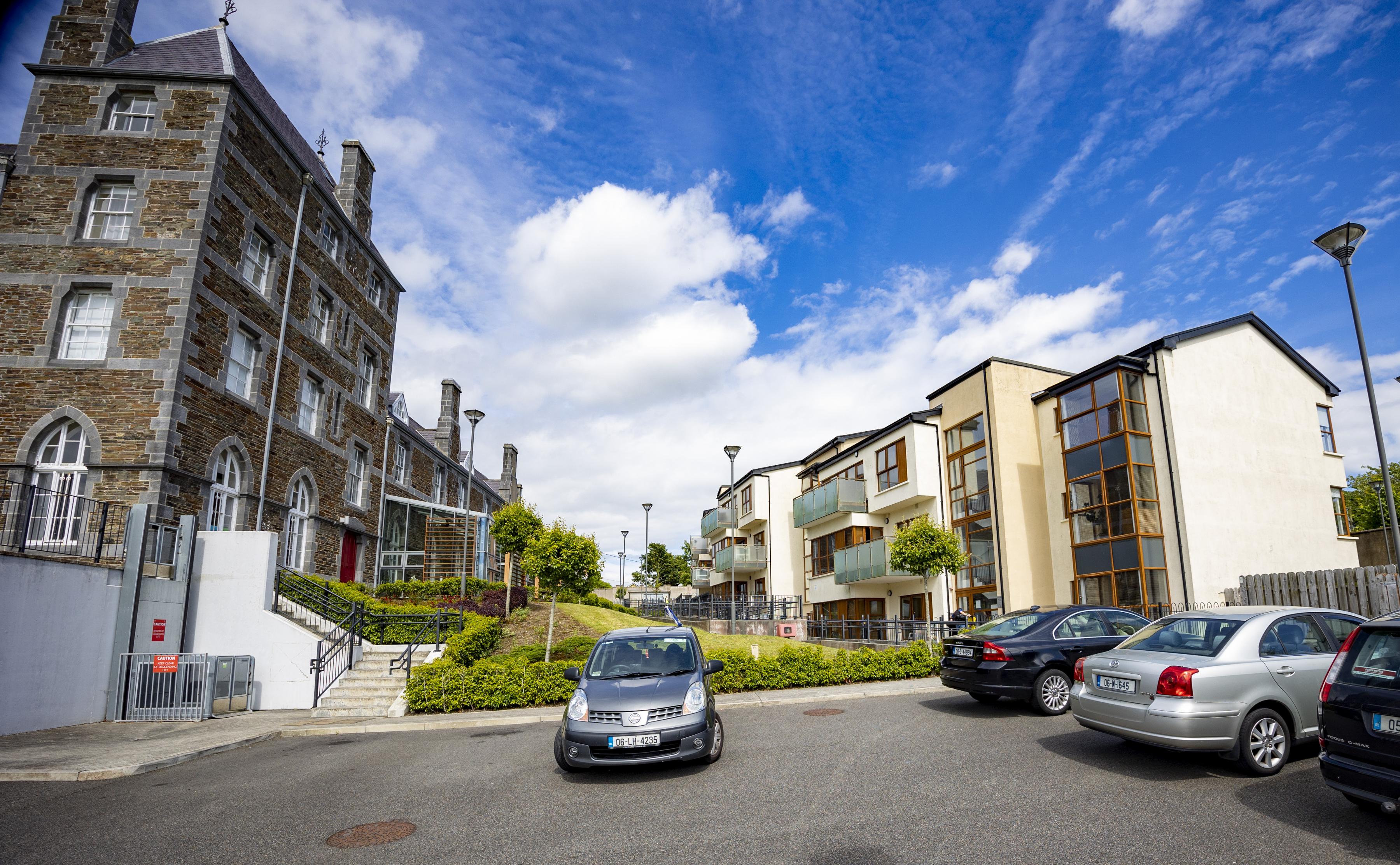
|
Development on Former Institutional Lands Policy Objective |
|
|---|---|
|
H 21 |
Where former institutional lands are proposed to be developed the following should be provided for:
|
7.10 Student Accommodation
In considering planning applications for student accommodation, the Council will have regard to:
- The existing surrounding residential character and amenity.
- The ‘Guidelines on Residential Developments for Third Level Students’ (2005), and any amendment thereof.
- The provisions of The National Student Accommodation Strategy (2017).
- Circular PL 8/2016 APH2/2016.
No social/affordable housing will be required with regard to bona fide purpose- built and professionally managed student accommodation.
|
Student Accommodation Policy Objective |
|
|---|---|
|
H 22 |
We will facilitate provision of high-quality, purpose built and professionally managed student accommodation in line with the provisions of the National Student Accommodation Strategy (2017). Purpose built student accommodation should be provided on campus or in suitable locations that are easily accessible to relevant educational institutions/ campuses by way of walking, cycling and high quality, convenient public transport. |
|
H23 |
The Council will support the sustainable distribution and provision of student accommodation in the city centre including through the development of ‘over shop living’ and the development of underutilised sites. Any development must have regard to the following:
|
7.11 Housing in Rural Villages and the Open Countryside
Almost 36% of the population of the County live outside of the city and the larger towns and a significant part of the identity of County Waterford is closely linked to the economic, social, cultural and environmental qualities of our open countryside and smaller rural settlements.
Rural Ireland has faced challenges in recent decades, such as the loss of traditional industries and employment, emigration, and poor connectivity. However, the emergence of new technologies and improved infrastructural connectivity provide opportunities to sustain resilient rural communities into the future. National and regional planning policy support an approach that ensures that our rural areas continue to be a living and lived-in landscape, focusing on the requirements of rural economies and rural communities, while at the same time avoiding ribbon and overspill development from urban areas and protecting existing environmental qualities.
It must be noted that the Council will facilitate the protection all National routes and associated junctions in accordance with TII’s Policy and the Department of Environment, Community and Local Government’s ‘Spatial Planning and National Roads Guidelines for Planning Authorities’ (2012) as well as Section 3.3.4 of the Sustainable Rural Housing Guidelines (2005) in the interests of road safety.
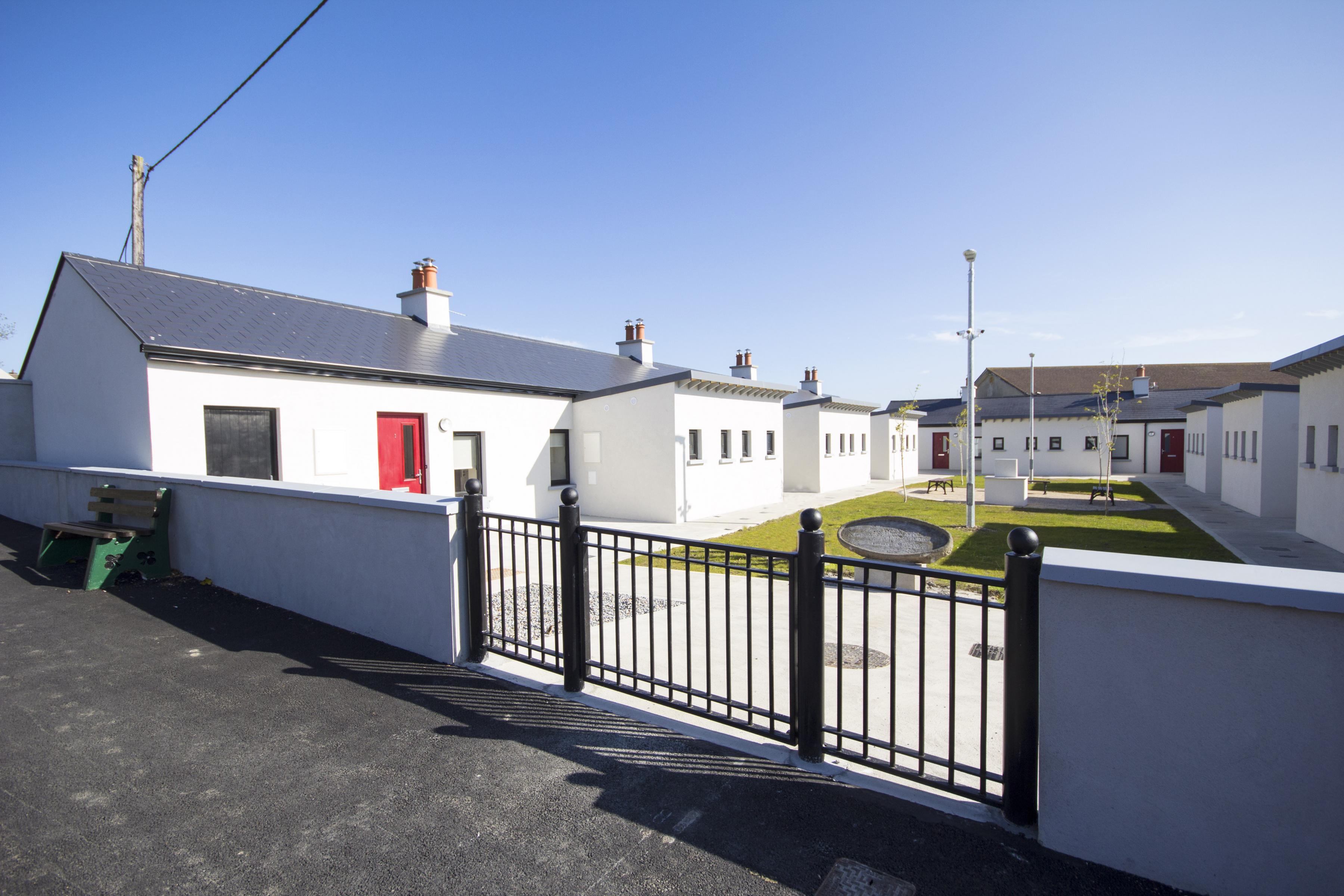
Accordingly, building on Government policy and the 2017 Action Plan for Rural Development, the National Planning Framework and the Regional Spatial and Economic Strategy for the Southern Region, the Council will focus on supporting rural communities by planning for the future growth and development of rural areas, including addressing decline, with a special emphasis on activating the potential for the renewal and development of smaller towns and villages.
Due regard will be made to the Spatial Planning and National Roads Guidelines for Planning Authorities 2012, relating to development affecting National Primary and Secondary roads, including motorways and associated junctions.
|
Rural Housing Policy Objectives – General |
|
|---|---|
|
H 24 |
We will support the sustainable development of rural areas by encouraging growth and arresting decline in areas that have experienced low population growth or decline in recent decades and by managing the growth of areas that are under strong urban influence to avoid over-development, while sustaining vibrant rural communities. |
To strengthen the structure and resilience of rural communities, the Council will:
- Maintain a stable, secure and growing population base through a strong network of rural settlement nodes, villages and small towns;
- Support the achievement of critical mass in our rural towns, villages and settlement nodes, by ensuring that these are a focus for local housing, community support/ services, and employment growth.
- Sustain and renew established rural communities by facilitating those with a rural housing need to live within their community.
- Discourage urban generated housing the open countryside which should normally take place in our rural settlement nodes, towns and villages.
7.11.1 Rural Villages
It is the policy of the planning authority to sustain existing rural facilities and services (i.e. schools, shops, pubs, community centres etc.) and the vibrancy of established rural communities by encouraging the reuse of vacant properties and appropriately designed clustered housing in Rural Settlement Nodes, which are the lowest tier of the Settlement Hierarchy (Table 2.2).
Rural clusters typically comprise low-density, self-build, detached housing on individual sites in an existing village or rural settlement node as defined in the settlement hierarchy. The key development principles for rural clusters are:
- Cluster developments may be planned and designed to be developed on a phased basis, where one or a number of units may be built at a time.
- The density of each individual site will be influenced by servicing requirements, the character of the village or rural node and the natural features of the site. This will be established through the design process.
- Plot areas, site subdivision and location of the treatment plant will be informed by whether the site is to be serviced by public services (e.g. connection to waste or water network) or individual on-site services (e.g. private well or wastewater treatment system).
- Where a serviced site scheme is proposed a design statement shall be prepared to assist future homeowners in designing their own bespoke home.
Consideration of planning applications for development within the settlement nodes will have regard to the service function and role of the node within the wider rural area, and will be determined having regard to the settlement typologies, Core Strategy and Settlement Strategy as set out in Section 2 of this Development Plan.
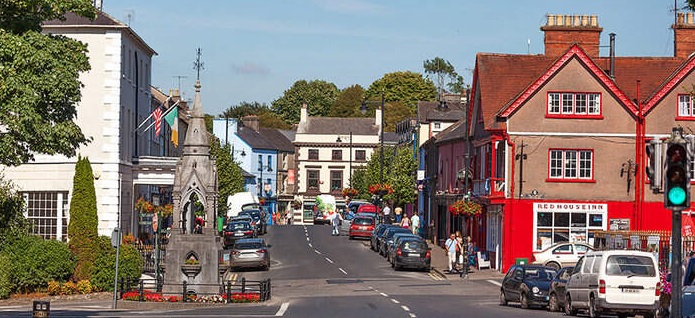
|
New Homes in Small Towns and Villages and Rural Cluster Policy Objectives |
|
|---|---|
|
H25 |
We will target the reversal of rural decline in the core of small towns and villages through sustainable targeted measures that address vacant premises and deliver sustainable reuse and regeneration outcomes. |
|
H 26 |
We will support the proportionate growth of appropriately designed development in rural towns and villages that will contribute to their regeneration and renewal. |
|
H27 |
We will develop a programme for ‘new homes in small towns and villages’ with property owners, public infrastructure agencies such as Irish Water and local communities to provide serviced sites with appropriate infrastructure to attract people to build their own homes and live in small towns and villages. |
7.11.2 Housing in the Open Countryside
Our open countryside is, and will continue to be, a living and lived-in landscape focusing on the requirements of rural economies and rural communities, based on agriculture, forestry, tourism and rural enterprise.
It is recognised that there is a continuing need for housing provision for some people to live and work in the open countryside. However, it is important to differentiate between rural areas located within the commuter catchment of our larger settlements (areas under urban influence) and those rural areas located outside of those catchments. Also, the NPF and the RSES require that a clear distinction be made between areas under urban influence (i.e., those within the commuter catchment of cities and large towns and centres of employment) and other rural areas. Having regard to national and regional policy, a rural typology has been undertaken for Waterford (set out in Part 1 Chapter 2 Core Strategy) which is consistent with national and regional policy. This typology is premised largely on a single category.
Rural Area under Strong Urban Influence
The key Development Plan objectives in this area are, on the one hand, to facilitate the housing requirements of the local rural community, subject to satisfying site suitability and technical considerations, whilst on the other hand directing urban generated development to areas zoned and designated for housing in the adjoining villages and settlement nodes.
The Council will manage sustainable growth in designated ‘Rural Areas Under Strong Urban Influence’ and facilitate the provision of single houses in the countryside based on the core consideration of demonstrable economic, social or local need to live in a rural area, siting and design criteria for rural housing and compliance with statutory guidelines[3] and plans, having regard to the viability of smaller towns and rural settlements.
|
New Homes in the Open Countryside Policy Objectives |
|
|---|---|
|
H28 |
We will facilitate the provision of single housing in the countryside, in rural areas under urban influence, based on the core consideration of demonstrable economic, social or local need to live in a rural area, as well as general siting and design criteria[4] as set out in this plan and in relevant statutory planning guidelines, having regard to the viability of smaller towns and rural settlements. |
Housing Need
Persons with an economic need to live in the particular rural area would include those whose employment is intrinsically linked to the rural area in which they wish to build (e.g. farming, horticulture, forestry, bloodstock, fishing or other similar rural employment) and who require a dwelling to meet their own housing needs close to their place of work.
Persons with a demonstrable social need to live a particular local rural area would include those that have lived a substantial period of their lives (7 years or more) in the local rural area and who require a dwelling to meet their own housing needs close to their families and to the communities of which they are part. A local area for the purpose of this policy is defined as an area generally within a 10km radius of the applicant’s former place of residence. This rural housing policy will apply equally to those living in the local area, who require a new dwelling to meet their own housing need, as well as returning emigrants wishing to establish a permanent residence for themselves and their families in their local community.
7.11.3 Occupancy of New Rural Dwellings
To ensure that development which takes place in the open countryside is of direct benefit to the local community and to those with a genuine housing need, we will generally attach occupancy conditions to planning permission for houses in these areas. Such a condition will require an applicant to enter into an agreement with the Council under Section 47 of the Planning and Development Act 2000 (as amended), restricting transfer of occupancy of the dwelling for a period of 7 years.
7.11.4 Ribbon Development
The Sustainable Rural Housing Guidelines for Planning Authorities (2005) define ribbon development ‘where five or more houses exist on any one side of a given 250 metres of road frontage’ and recommend against the creation/ perpetuation of ribbon development for a variety of reasons relating to road safety, future demands for the provision of public infrastructure as well as visual impacts.
When considering a proposal for development we will have due regard to the provisions of the Guidelines, the history and pattern of development in the area and the following policy:
|
Ribbon Development Policy Objective |
|
|---|---|
|
H 29 |
We will avoid the creation of ribbon development (defined as five or more houses existing on any one side of a given 250 metres of road frontage) and will assess whether a given proposal will contribute to and/ or exacerbate such ribbon development, having regard to the following:
|
7.11.5 Housing in High Amenity Areas and on Approach Roads
High Amenity Areas (previously referred to as greenbelt areas) play an integral role as part of the fabric of our settlements, chiefly in terms of providing a clear physical demarcation to the adjoining urban area, and through their use for community recreation and amenity purposes. The value of High Amenity Areas as enabling longer term strategic expansion of our urban areas is set out in NPO 62 of the NPF.
Within High Amenity Areas there will be restrictions on development to maintain a clear demarcation between rural and urban areas, to support the sustainable development of the settlement, to reduce urban sprawl and to safeguard the potential expansion of the settlements in the future.
Housing development in High Amenity Areas will only be considered subject to the overall objective of maintaining the open character of the lands, securing the viability of the nearby settlement. The housing needs of existing landowners may be facilitated on High Amenity Areas and on the approach roads to settlements, where other more suitable alternatives are unavailable, and subject to general siting and design criteria for rural housing as set out in this plan and in relevant statutory guidelines.
|
Housing in High Amenity Areas and Approach Roads Policy Objective |
|
|---|---|
|
H 30
|
On lands zoned High Amenity and along the approach roads to settlements we will:
We will facilitate development proposals by existing landowners with a genuine demonstrable economic, social or local need for a first home for their own permanent occupation, subject to consideration of available alternatives and sequential testing, as well as general siting and design criteria as set out in this plan and in relevant statutory planning guidelines. |
7.12 Refurbishment, Extensions and Replacement of Existing Structures in Rural Areas
The Council encourages the reuse, refurbishment and upgrade of older vernacular rural dwellings and structures which form an important part of our built heritage. Applicants for planning permission will not be required to demonstrate a local housing need in this instance.
Permission for demolition will only be considered where it is demonstrated that a vernacular dwelling is not reasonably capable of being made structurally sound or otherwise improved.
If a dwelling is not considered to be vernacular and does not make an important contribution to the heritage, appearance or character of the locality, or has been damaged beyond reasonable repair, planning permission will be considered for a new, replacement dwelling, subject to appropriate design, scale of building and normal planning considerations.
When assessing proposals to convert, re-use and/or adapt traditional buildings in rural areas, it is a requirement that:
- The original walls must be substantially intact.
- The size of any house extension takes account of the siting and size of the existing dwelling and that the character of the original structures is respected.
- The design of the proposal does not erode the siting and design qualities of the building and its setting which makes it attractive in the first instance.
- Mature landscape features are retained and enhanced with landscape proposals.
|
Refurbishment and Extensions of Existing Structures Policy Objective |
|
|---|---|
|
H 31 |
We encourage the retention and sympathetic refurbishment, with adaptation as necessary, of vernacular dwellings and structures in the countryside. In addition:
|
|
H 32 |
If a dwelling is not considered to be vernacular, does not make an important contribution to the heritage, appearance or character of the locality or is not reasonably capable of being made structurally sound or otherwise improved, planning permission may be granted for a replacement dwelling where it can be demonstrated that the layout, siting and design will not adversely impact on the rural character of the area and that the development is consistent with best practice design principles for housing in rural countryside locations. |
|
H 33 |
All proposals for refurbishment, extension or replacement of residential property in un-serviced areas will be required to demonstrate compliance with the EPA Code of Practice: Domestic Wastewater Treatment Systems (Population Equivalent ≤ 10) 2021 and any revisions thereof in addition to other policies and development management standards as set out in this plan. |
7.13 Housing in Gaeltacht na nDéise
We are committed to ensure that the unique needs of Gaeltacht na nDéise are considered when determining proposals for housing development in the Gaeltacht area as defined in the Development Plan in order to ensure that the viability of the Gaeltacht as a linguistic community is protected. Analysis carried out as part of the ‘Comprehensive Linguistic Study of the Use of Irish in the Gaeltacht’[5] suggests that the proportion of active, integrated Irish speakers in a Gaeltacht Area needs to be maintained above 67% for the use of Irish in a community to be sustainable. The statistic evidences indicated that Irish speaking communities yield to the pressures of a language shift when the proportions of active speakers in a community fall below this threshold. The Linguistic Study classifies An Rinn having 44-67% of its total population (aged over three years) as daily Irish speakers [6].
In this regard the Development Plan will seek to ensure that development proposals will avoid any significantly negative impact, directly or otherwise, on the use of the Irish language as the primary spoken language of the community. The policy below will ensure the linguistic viability of the area is enhanced over the period of the Development Plan through the application of occupancy conditions under Section 47 of the Planning and Development Act 2000, as amended.
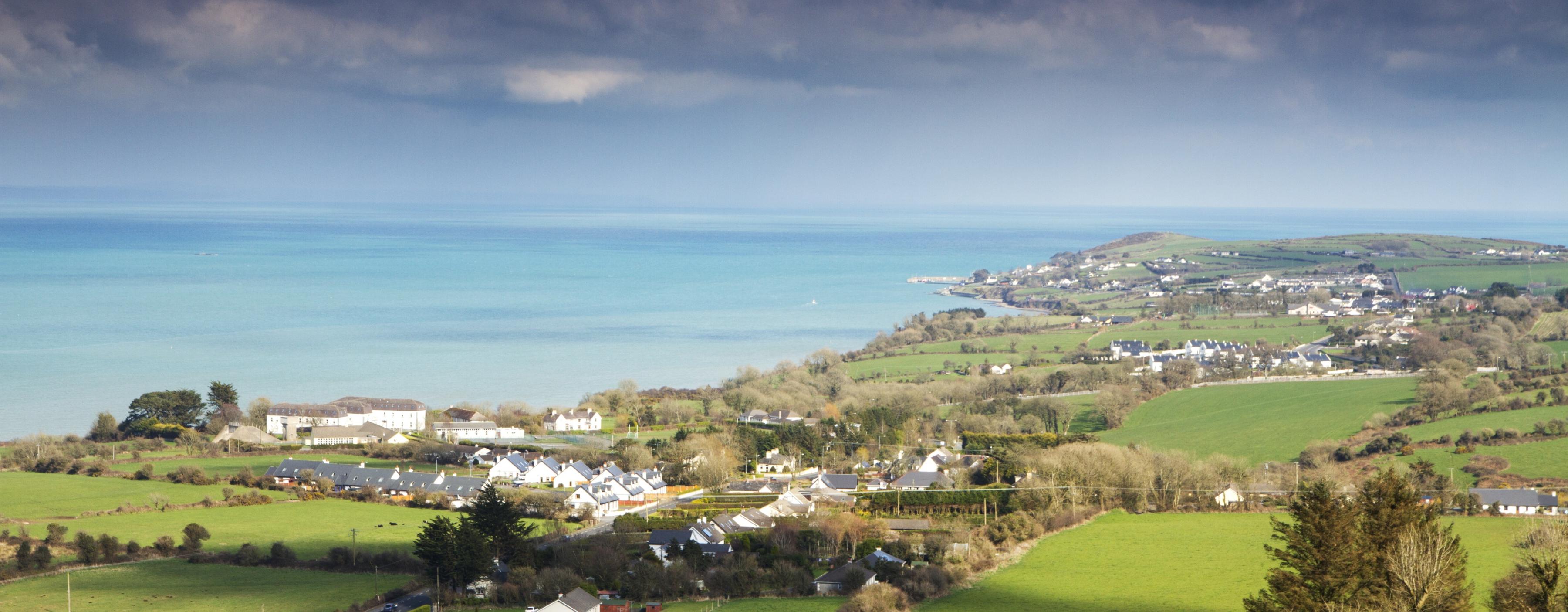
|
Housing in Gaeltacht na nDéise Policy Objectives |
|
|---|---|
|
H 34 |
When authorising proposals for two or more house developments on land zoned for residential use we will require all of the following:
|
|
H 35
|
When considering proposals for development of a single house within Gaeltacht na nDéise[7] as defined in the Development Plan maps, we will require all of the following:
|
NOTE: The standard of fluency in Irish required to demonstrate compliance with the LEC shall be the standard required to pass Level B2 Meánleibhéal 2 in the Teastas Eorpach na Gaeilge (TEG) exams and shall relate to the head of the household[9]
7.14 Sustainable Communities
Community facilities play a central role in shaping our cities, towns, neighbourhoods and villages. They provide for the educational, cultural, sporting, childcare, environmental health and social needs of our society. Sustainable neighbourhoods need a range of community facilities that are fit for purpose, easily accessed and adaptable. All of our citizens across the Waterford should have easy access to these facilities in order to avoid social exclusion and inequality.
The Waterford City and County Local Economic and Community Plan 2015 – 2020 together with policy objectives outlined in this Development Plan provides an opportunity to identify and chart a course of action that will support economic and community development that renders Waterford a better place where a higher quality of life is available to all the people of the County.

7.15 Age Friendly
The Age Friendly Strategy 2017-2022 contains nine themes which are used as a basis for improvements that can be made to ensure that our City and County is an ‘Age Friendly’ place and include:
- Respect and Social Inclusion.
- Social Participation.
- Civic Participation and Employment.
- Home Environment.
- Health/Active Living.
- Transportation.
- Built and Natural Environment.
- Safer Communities; and,
- Communication and Information.
7.16 Healthy Waterford
Healthy Waterford Strategic Plan 2018 - 2021 was prepared in in line with the Governments Healthy Ireland Framework 2019-2025. The Development Plan seeks to provide an environment in which the health of all communities is promoted and improved across the entire life cycle of our residents and to support access to opportunities that help achieve good physical health and positive mental health and wellbeing. The Healthy Waterford Strategic Plan sets out a series of priorities through which healthy choices can easily be accessed by everyone regardless of age, location or socio-economic background.
7.17 Social Inclusion, Equality and Participation
Social inclusion is defined in many different ways but one of the most common understandings is that, through acting inclusively, society can ensure that everyone has equal opportunity to participate in, and contribute to, community life – regardless of their age, ability, nationality, religion or any of the many other characteristics which makes society diverse. The Council will encourage and proactively promote an ethos of social inclusion and participation.
7.18 Community Buildings
Sustainable neighbourhoods require a range of community facilities as stated in the Department of Environment, Heritage and Local Government Guidelines on Sustainable Residential Development in Urban Areas (2009).
The Council will encourage the grouping of community, commercial and local employment facilities such as schools, sporting facilities, childcare facilities, community centres, primary health care centres and local commercial service of a scale appropriate to serve the local community through land use and zoning objectives. This grouping of services will facilitate the development of the 10-minute neighbourhood where they are within walking distance of residents, education and employment centres and can create a focal point for the ‘neighbourhood’. An amenity or service may be present (possibly at close distance) but make little contribution to quality of life if access is poor or perceived quality is low. Where possible permeability should be enhanced and accessibility for all abilities should be facilitated to ensure all levels of access and mobility are accommodated
Allotments
Public allotments and community gardens can have several benefits including the promotion of healthy lifestyles, biodiversity, allow for active participation in the growing of food, and includes other sustainable activities such as composting and beekeeping. There are allotments and community gardens are located at Ballybeg Community Development Project.
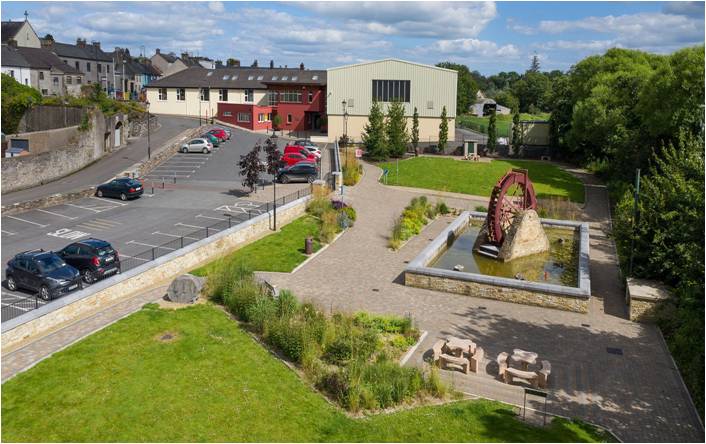
7.19 Childcare and Educational Facilities
Childcare
The provision of childcare facilities is an important factor for economic and social wellbeing. The Road Map for Social Inclusion 2020 – 2025 and the National Childcare Scheme in 2019 supports the delivery of improved childcare services across the State. The provision of childcare is essential to enable parents to participate in the workforce and to obtain an income that provides an acceptable standard of living for both them and their children. Quality childcare can also make a significant contribution to child development in the early years of a child’s life.
Current issues in general childcare provision include lack of affordable, accessible community based childcare services and before and after school childcare services in urban and rural areas of Waterford, particularly in the vicinity of Waterford City. These services are vital in assisting people to return to work and to facilitate training for persons in long term unemployment. There is also increased demand for school age childcare and wrap around provision such as breakfast clubs, homework clubs and summer camps as parents are returning to the workforce. While the Council is not directly involved in the provision of childcare services, the Development Plan seeks to ensure that sufficient facilities are provided particularly in newly developing areas. Waterford County Childcare Committee – Coisete Cúram Leanaí Phort Láirge supports childcare infrastructure and early childhood facilities across the County and any new development should have regard to their requirements where relevant.
The primary policy basis for the provision of childcare facilities is the ‘Childcare Facilities Guidelines for Planning Authorities’ (2001). In the interest of promoting sustainability the Guidelines advocate that suitable locations for the provision of childcare facilities include:
- Residential areas.
- Places of employment.
- Large educational establishments.
- City and towns/district/ neighbourhood centres; and,
- Areas convenient to public transport networks.

In general, where a new residential development is proposed – with 75+ dwellings (or as otherwise required by the Planning Authority) – one childcare facility shall be provided on site in accordance with Sections 2.4, 3.3.1 and Appendix 2 of the ‘Childcare Facilities Guidelines for Planning Authorities’ (2001). The provision of childcare facilities within new and existing, residential areas shall have regard to the geographical distribution and capacity of established childcare facilities in the locale and the emerging demographic profile of the area.
Schools
The Guidelines on ‘Sustainable Residential Development in Urban Areas’ (2009) draws particular attention to the need to plan for future school provision and advocates timely consultation between Planning Authorities and the Department of Education.
The ‘Code of Practice on the Provision of Schools and the Planning System’ (2008), prepared jointly by the Department of Environment, Heritage and Local Government and the Department of Education, provides guidelines for the forecasting of future planning for schools nationally.
The Council will improve sustainable accessibility to existing school facilities by cycling/walking accessibility or public transport and ensure any new school are accessible by cycling/walking from the main catchment areas and accessible by public transport with appropriate safe facilities within reasonable access of public transport and active travel modes in accordance with the DoHPLG Guidance document The Provision of Schools and the Planning System. The Council will also ensure that a robust site selection process is followed in the selection of new school locations taking into account proximity to community developments such as community centres, playing fields, libraries etc. so that the possibility of sharing facilities can be maximised.
Following consultation with the Department of Education a number of sites have been identified and are appropriately zoned in for this purpose in the Development Plan.
SETU and Higher Education
The Council supports the planned transition of WIT to South East Technological University (SETU). This development will act as a key enabler to transform Waterford into the South-East Regional Capital and into a modern European University City.
This establishment of the SETU, as a University of International Standing, will build on existing higher education infrastructure and enhance third-level provision in the city, and expand and integrate education provision more broadly in support of the designation of the city as a UNESCO Learning City and a University City
7.20 Places of Worship and Burial Grounds
There has been an increase in the number of faith communities in the County in recent times and this has given rise to a demand for worship spaces. While civic halls and community centres may provide opportunities for public worship, faith communities which have a significant number may require their own places of worship. Consideration may need to be given to appropriate locations for new facilities, given the potential for traffic and noise related issues if located in unsuitable areas.
Local Authorities have a statutory responsibility to provide for burial facilities. Some burial grounds have reached or are nearing full capacity and there will be a requirement to identify additional lands in the longer term at appropriate locations.
7.21 Health Centres/ Services
A number of public, voluntary and private agencies are responsible for the provision of healthcare facilities within the County, with the Health Services Executive (HSE) being the primary agency responsible for delivering health and personal social services. There are currently three public hospitals within the Waterford area namely, Waterford University Hospital in Waterford City, and Dungarvan Community Hospital and St. Patricks Hospital, John’s Hill Waterford City. There are 11 health centres in Waterford County located in the larger urban settlements.
The primary care strategy ‘Primary Care: A New Direction’ published by the Department of Health and Children in 2001 promotes the development of ‘one stop’ primary health and community care services integrated under one roof. There are 3no. Primary Care Centres in Waterford, one in Waterford City, one in Tramore and one in Lismore. There is also a Primary Care Centre in Ferrybank.
University Hospital Waterford (UHW)
UHW provides general medical, surgical and maternity care to people living in South Kilkenny, Waterford City and County. The hospital provides specialty services to the population of the south east c. 500 000. The hospital is the designated cancer centre for the south east, providing rapid access assessment for Breast, Prostate, Lung and Skin cancers. Cancer surgery is centralised at UHW. There are 431 inpatient and 85 day procedure beds. In 2019 UHW had 58,448 ED Attendances, 28,554 Day cases treated 21,658 inpatients (24 hours or more) and 142,264 OPD attendances. UHW has a staff of 2,342 (June 2020).
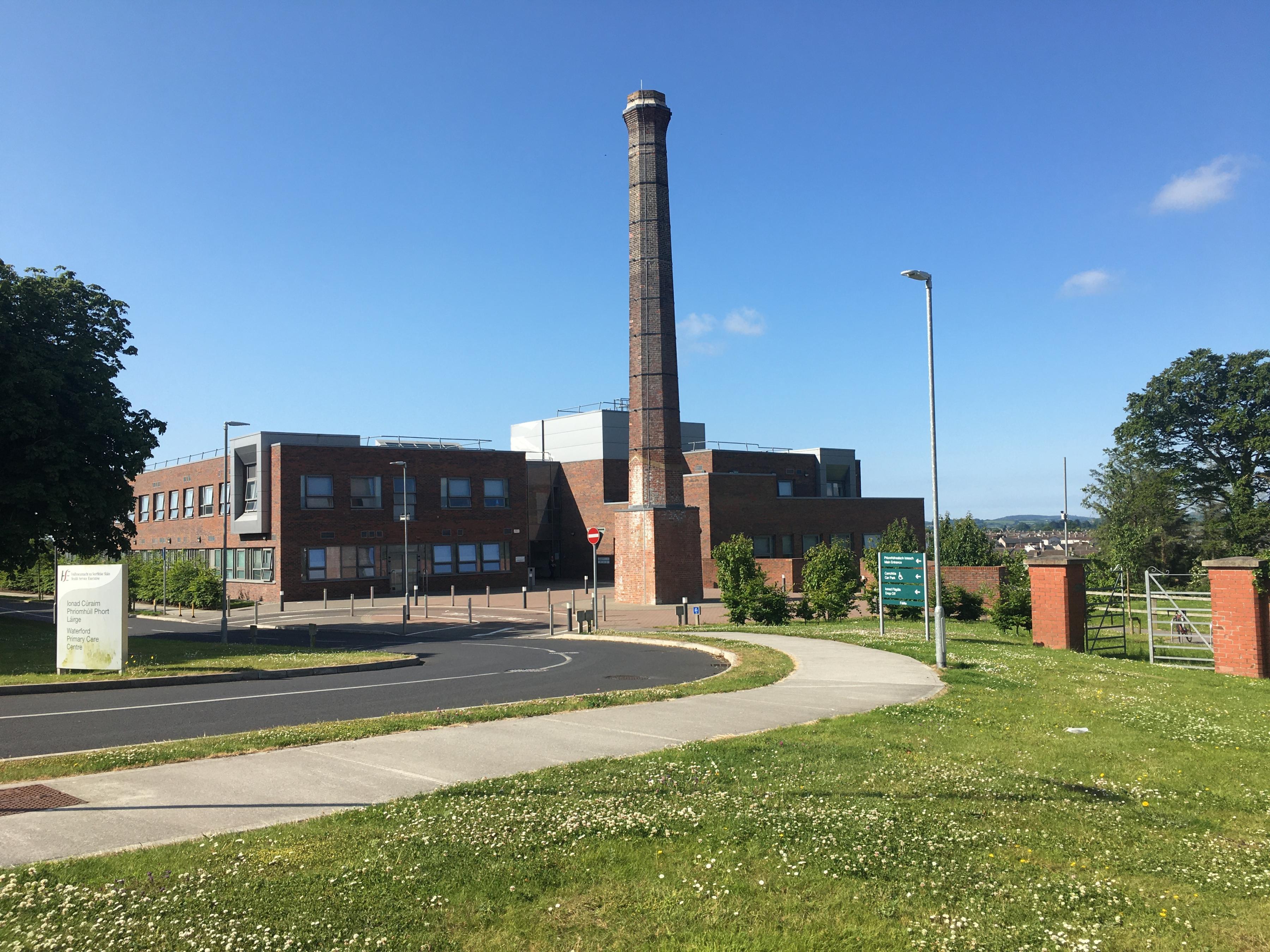
7.22 Libraries
Waterford Libraries deliver a wide range of modern community based services and facilities in support of learning, culture, arts and recreation across 12 branch locations. Our libraries are regularly used by 16,000 members and record in excess of 500,000 visits and 500,000 loans annually. In addition, the service provides access to quality online lending, educational, local studies and other electronic resources.
Waterford City and County Council will continue to expand and develop this service subject to need and available resources in conjunction with the Library Service Development Plan “Your Library, Your Space, Your future 2017 – 2022”.
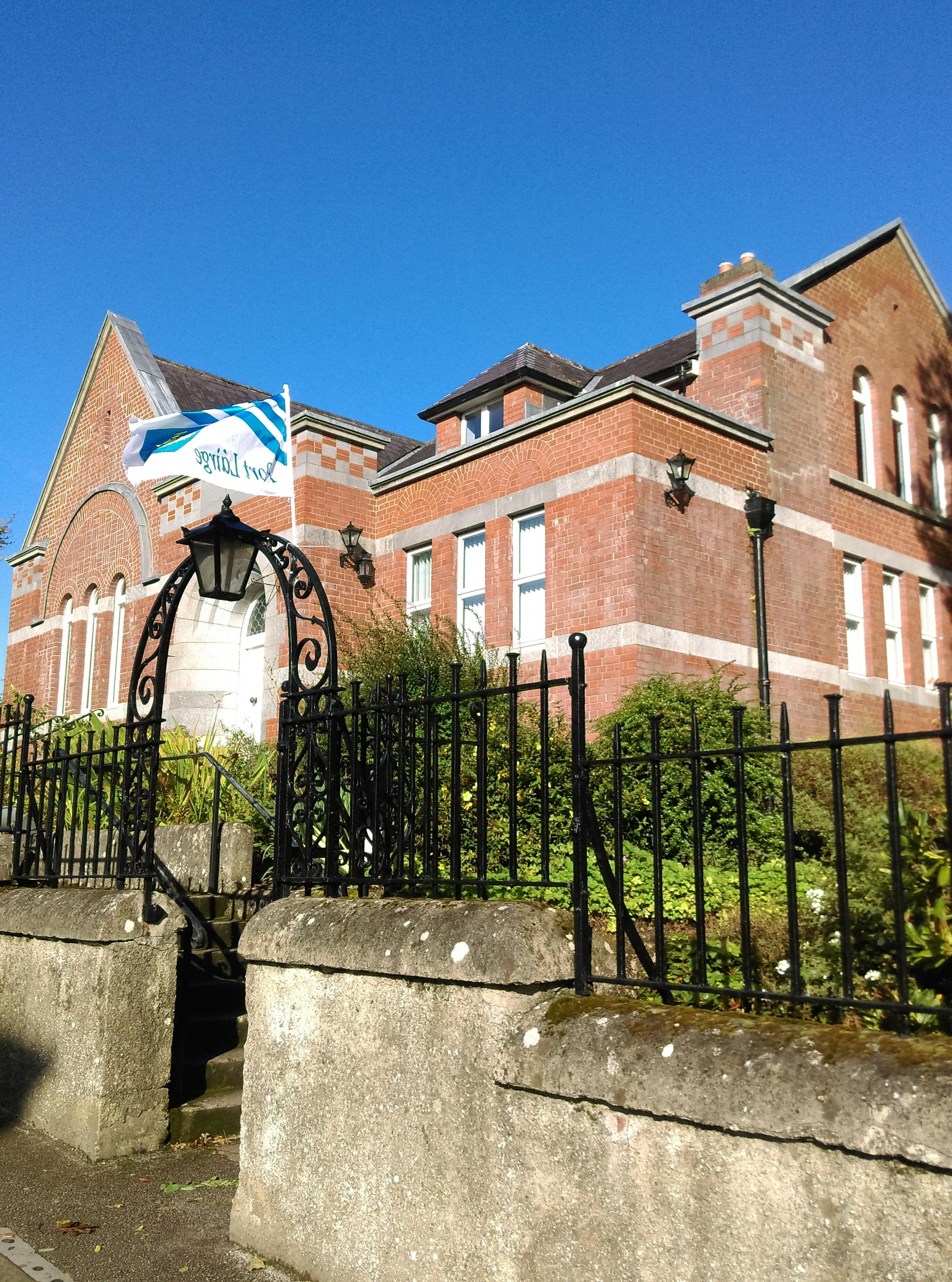
7.23 Art and Cultural Facilities
Waterford has a rich and living cultural heritage and a strong cultural identity, including its sport, literature, music and creative industries. Culture is an integral part of how we lead our everyday lives. It connects us through our rituals and traditions through our landscape, language, sport, food, song and dance. It roots us and gives us a sense of place. It assists our health and wellbeing, gives expression to our creativity and provides outlets for participation, engagement, reflection, celebration and entertainment for all citizens.
Creativity is increasingly been recognised as supporting innovation and economic development. The Creative Ireland programme and planned development of a creative industries ecosystem in the Waterford Cultural Quarter support cultural and economic growth including in employment, tourism and Waterford’s status as regional capital of the South East. Heritage and Culture can all play an important economic role that promotes jobs, encourages tourisms and supports the hospitality sector of Waterford.
The Council through its Arts Office seeks to promote the cultural life of the County and increase accessibility to arts and culture facilities for all members of the community. This aim will be achieved through both the retention of existing facilities and the introduction of new facilities, such as Waterford Cultural Quarter in the heart of Waterford City. The location of such facilities in towns, districts and other areas with higher levels of public transport accessibility, together with a diverse range of complementary uses, can make a significant contribution to the vitality and viability of urban areas and the aims of sustainable development.
7.24 Fire Services
The Council will continue to support the development and upgrading of the fire service.
7.25 Recreational and Sporting Facilities
The benefits accruing from participation in sport and recreational activities are well documented. There are a variety of sporting and recreational facilities and grounds throughout the City and County, which provide for the active recreational needs of the community. It is important that facilities are located where they are of most value and accessible to the community being served. Accessibility should be promoted primarily through public transport links and by walking/cycling as well as through accessible planning and design.
The Council will strive to provide facilities for sport and physical activity that are well maintained, sufficient in number and accessible to as many local people as possible, across a diverse range of sports. The Council will do this through relationships and interactions with Waterford Sports Partnership, local sporting clubs, regional and national sporting organisations, schools, community groups. In providing sporting and recreational facilities the following key policies and plans should be referred to:
- National Sports Policy 2018-2027.
- National Physical Activity Plan (launched 14/1/16).
- Sport Ireland Statement of Strategy 2018-2022.
- Sport Ireland Participation Plan.
- Waterford Sports Partnership Strategy 2018-2022.
- Healthy Waterford Strategic Plan 2018-2022;
- Healthy Waterford Report on Designing Communities: the importance of place in promoting health and wellbeing, July 2019.
- Waterford’s Local Sports Plan; and
- Healthy Waterford Report on Designing Communities: the importance of place in promoting health and wellbeing, July 2019.
The Waterford Sports Partnership Strategic Plan 2018 -2022 was prepared in in line with the National Sports Policy, National Physical Activity Plan and the Sport Ireland Strategy. The Development Plan seeks to provide an environment which encourages and supports active and healthy lifestyles in order to maximize participation in sport and physical activity for all across the lifecycle. The Council will continue to work closely with Waterford Sports Partnership to achieve this common goal.
The sharing of school and community sports facilities will be addressed through the development management process and in conjunction with the Department of Education.
The Council will promote the provision of regional scale open space and recreational facilities including the regional parks and facilities, particularly those close to developing areas within our larger urban settlements.

Play Areas
Ready Steady Play! A National Play Policy’ was published by the Department of Children and Youth Affairs in 2019. The principal aim of the National Play Policy is to provide a framework for future development to create better play opportunities for children. Its overall objective is to plan for an increase in public play facilities and, thereby, improve the quality of life of children living in Ireland by providing them with more play opportunities. The Council is moving towards a more Nature Based Play philosophy and approach with respect to the provision of Play Opportunities in the County. This involves shifting the emphasis from merely equipment-based provision to using and leveraging the genus loci and landscape character of outdoor sites in combination with natural elements (e.g. earth sculpting, mounding, ponds, tree stumps). This Nature-based approach provides more rewarding experiences and improves health and well-being.
Water Based Uses
It is recognised that the development of improved facilities for water-based sports is important for the revitalisation of harbours along our inland waterways and the coast of the County. The Council will support such water-based uses and activities in the harbours and along the rivers and coastline, with an emphasis on those that cater for a broader spectrum of the population.
The County features c.100km kilometres of coastline along with the River Suir and the Blackwater, which are valuable assets. If utilised to their full potential they could contribute to the health and well-being of the residents of, and workers, in the County and will increase sport and physical activity participation levels locally. These activities can also offer significant potential for tourism growth.

Swimming Infrastructure
The National Sports Policy identified swimming as one of the priority sports having the greatest potential for generating higher levels of active participation over the full life course. Swimming is also a fundamental life skill and one of the few sports that is accessible by all ages, genders and abilities, regardless of fitness levels or health status and as such the provision of facilities for swimming warrants specific consideration in the Development Plan.
7.26 Waterford Active City Initiative
Waterford has been nominated as an ‘Active City’ under the Sport Ireland Active City initiative. This initiative will strive to create social norms about the benefits of sport and physical activity and provide opportunities for residents of Waterford City to be active, regardless of ability or age. The programme will work with key partners to increase physical activity and decrease inactivity, by developing environments where people are inspired and supported in being active, ultimately working toward healthier lifestyles for everyone. The Sport Ireland Active Cities concept is built on the principles of the Global Action Plan for Physical Activity, GAPPA, developed by the WHO in 2018. The Council will work closely with the Waterford Sports Partnership and other key stakeholders to support and develop this initiative.
Sport Ireland Active City Strategy is broken down into four key pillars:
1. Actives Societies.
2. Active Environments.
3. Active People; and,
4. Active Systems.
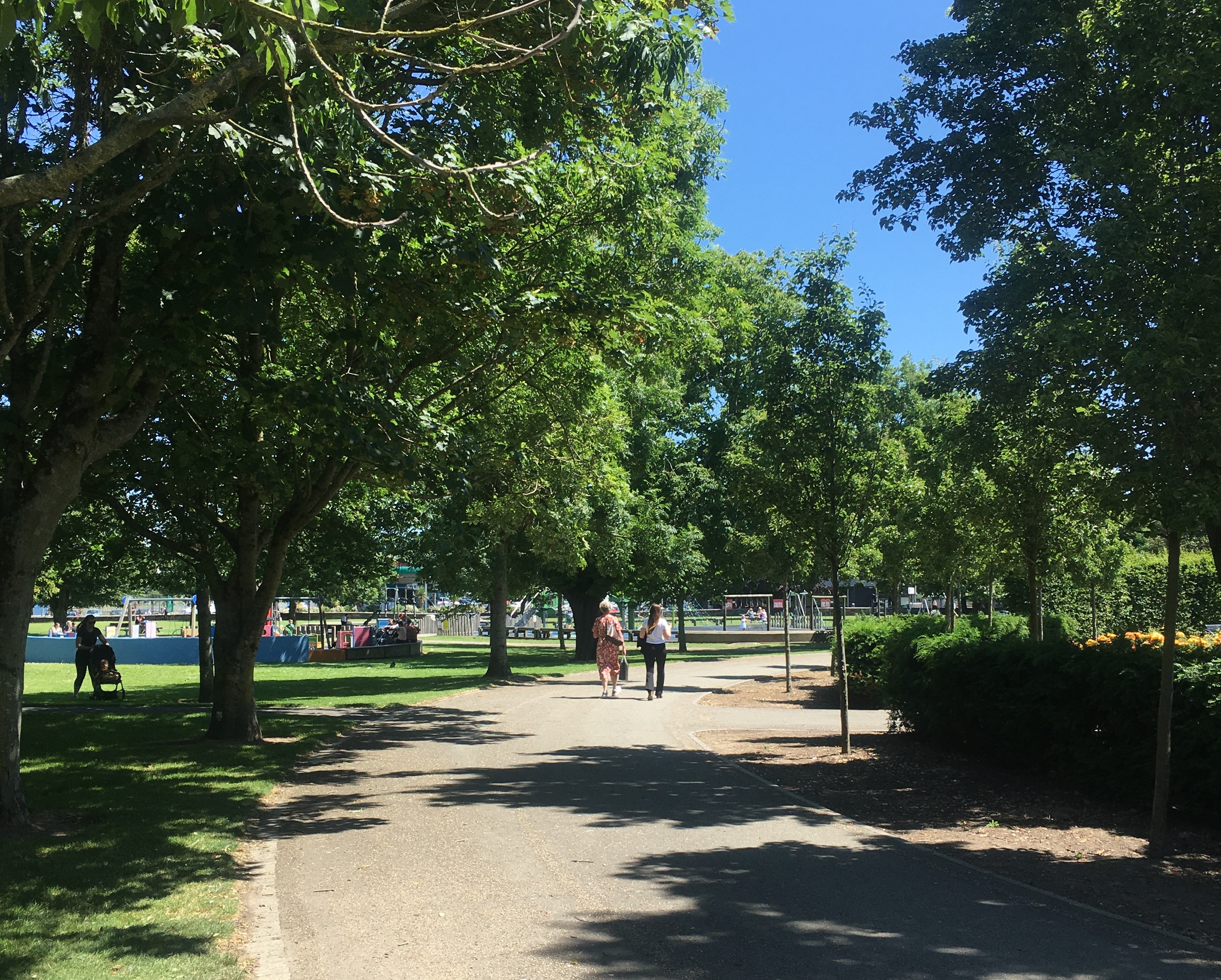
7.27 Sustainable Community Policy Objectives
|
Sustainable Community Policy Objectives |
|
|---|---|
|
SC 01 |
To support the development of socially and economically balanced sustainable communities and assist in delivering and implementing the objectives and actions of the Local Economic and Community Plan (LECP) in collaboration with the Local and Economic Development Committees. |
|
SC 02 |
Promote the highest levels of social inclusion and universal accessibility to all social and community facilities and services. |
|
SC 03 |
To collaborate, support and work, in conjunction with local communities, social and community service providers, Waterford Council Arts Office, The Arts Council and other key stakeholders to provide for the provision of social, community, cultural and recreational facilities throughout the City and County, which are easily accessible, to ensures that all communities have access to a range of facilities that meet the needs, including `changing places bathrooms’. |
|
Age Friendly Policy Objective |
|
|---|---|
|
SC 04 |
To support and facilitate the implementation of the Waterford Age Friendly Strategy 2017 – 2022 and any subsequent Age Friendly Strategy for Waterford. |
|
Healthy Waterford Policy Objective |
|
|---|---|
|
SC 05 |
To support the objectives of public health policy including Healthy Ireland and the National Physical Activity Plan, through integrating such policies, where appropriate and at the applicable scale, with planning policy. |
|
SC 06 |
To support and facilitate the creation of a Healthy City and County in accordance with the Healthy Waterford Strategic Plan 2018 – 2021 and any subsequent revision thereof. The Council will also support the development of the Waterford Active City Initiative as a key partner and stakeholder. |
|
Equality, Social Inclusion and Participation Policy Objective |
|
|---|---|
|
SC 07 |
Consider cultural diversity and ethnic minorities in planning for the needs of communities and ensure community facilities and social services provided are accessible for all individuals, communities and sectors of society, including people with disabilities, people with special needs, elderly, youth, marginalised and disadvantaged groups. |
|
SC 08 |
To promote equality and progressively reduce all forms of social exclusion that can be experienced because of gender, gender identity, marital status, family status, age, race, religion, disability, sexual orientation, nationality, homelessness and membership of the Traveller Community and promote active participation. |
|
Community Facilities Policy Objectives |
|
|---|---|
|
SC 09 |
Maintain and, where possible, improve and expand the provision of community facilities across the City and County to ensure that facilities are adequate to meet the needs of the communities they serve, are safely accessible by walking and cycling, are within walking or cycling, distance and physically integrated with residential and employment areas and are provided concurrently with new residential development. A policy of shared and multi-use of facilities will be promoted. |
|
SC 10 |
Seek to improve the energy efficiency of the Council’s existing building stock to promote energy efficiency in the design and development of all new buildings in the County, in accordance with the Building Regulations Part L (Conservation of Fuel and Energy) |
| SC 11 | To co-operate with all service providers in the provision of new health, educational, library, social and community facilities through the re-use of existing institutional buildings and community facilities or where new buildings are required that they would be suitable for multi-use |
| SC 12 | Encourage community gardening, allotments and other use of open space to facilitate lower carbon living education and practice. |
| SC 13 |
We will seek to provide appropriate community facilities across our communities and provide a community hall/hub in the following locations:
|
|
Childcare and Educational Facilities Policy Objectives |
|
|---|---|
|
SC 14 |
We will encourage the provision of childcare facilities in appropriate locations, including residential areas, city/town centres, district and neighbourhood centres, in areas of employment and educational establishments in accordance with national policy and the Department of the Environment, Heritage and Local Government Planning Guidelines on Childcare Facilities: Guidelines for Planning Authorities (DoEHLG, 2001) and any other relevant statutory guidelines which may issue during the period of this Plan. We will require as part of planning applications for new large scale residential, public community, commercial, retail and mixed-use developments that provision be made for appropriate purpose built childcare facilities where such facilities are deemed necessary by the Planning Authority and by Coiste Cúram Leanaí Phort Láirge (CCLPL). |
|
SC 15 |
To promote equality and progressively reduce all forms of social exclusion that can be experienced because of gender, gender identity, marital status, family status, age, race, religion, disability, sexual orientation, nationality, homelessness and membership of the Traveller Community and promote active participation. |
| SC 16 | Protect existing schools and their amenities and ensure the reservation of primary and post-primary school sites in line with the requirements of the relevant education authorities and to support the provision of school facilities and the development / redevelopment of existing schools for educational and other sustainable community infrastructure uses throughout the City and County. |
| SC 17 | Support the provision of childcare facilities and new and refurbished schools on sites located within or close to existing/proposed neighbourhood/urban areas and on existing/proposed public transport corridors, which meet the diverse needs of local populations. |
| SC 18 | To support the development and ongoing provision of Further and Higher Level Institutions in the City and County including SETU, Waterford College of Further Education Institute and any new Further and Higher Level Institutions – including Irish colleges or major overseas universities whether within established campuses or in new campuses. |
| SC 19 | To support climate change adaptation in schools & community facilities. |
|
Health Centres/Services Policy Objectives |
|
|---|---|
|
SC 20 |
Support and facilitate the development of health centres, hospitals, clinics, mental health and wellbeing facilities and community-based primary care centres in appropriate urban areas in collaboration with the Health Service Executive and other statutory and voluntary agencies. |
|
SC 21 |
To support the development of University Hospital Waterford as a centre of excellence for the South East capable of providing high quality health care for the expanding population of the Metropolitan Area and wider South-East Region, subject to the outcome of environmental assessments and the planning process. |
| SC 22 | To support the development of additional Acute Care Services and additional health services/facilities at UHW as identified in the National Development Plan Strategic Priorities and provision of a Second Cath Lab Facility in accordance with WMASP PO 22 of the RSES. |
| SC 23 | Encourage the integration of appropriate healthcare facilities within new and existing communities. |
|
Libraries Policy Objectives |
|
|---|---|
|
SC 24 |
Continue to support the development of the existing library service and provide for an expanded service and network subject to need and the availability of resources in conjunction with the Library Service Development Plan “Your Library, Your Space, Your future 2017 – 2022”. |
|
SC 25 |
Develop links between existing library facilities for third level education (SETU) and outreach facilities in relation to distance learning. |
|
Art and Cultural Facilities Policy Objectives |
|
|---|---|
|
SC 26 |
The Council will encourage the preservation, enhancement and provision of Arts and Culture identified as being of value in terms of contributing towards physical, social, and economic benefit for the County. The Council will also facilitate the continued development of general arts and cultural facilities throughout Waterford though an evidence based local needs assessments taking into account – current and future population and age dynamics, current arts and cultural assets provision and access, community aspirations, opportunity for place making enhancement through physical infrastructure and development including provision of communal multi-use open space where it can have the most impact. This will be done in accordance with the Council's Culture and Creativity Strategy (2018- 2022) and the Arts Strategy (2016 - 2021) or update of these as well as subsequent Arts Development Policy. Particular attention should be paid to the spatial objectives set out in Action 5.1 of the Culture and Creativity Strategy (2018- 2022) which aims to ‘Identify opportunities for shared use of spaces locally for cultural engagement and activities ’and, the County Arts Strategy Objective 4 (I.P.4.2) which seeks to “Commission an Infrastructure Research Report to determine current arts infrastructure and strategies for maximising usage and improving arts infrastructure throughout the county. |
|
SC 27 |
Support and develop existing arts and cultural facilities and festivals in Waterford and encourage the provision of new or improved arts and cultural facilities and the establishment of new festivals and events, in particular those of national and international distinction and in parts of the County where there is a deficiency in such provision. To assist in this a county register of arts and cultural assets shall be complied during the lifetime of the Development Plan. |
| SC 28 | Actively foster and develop the Waterford Cultural Quarter (as set out in the WCQ Strategic Plan 2021 – 2025) as a place which is inclusive and a place for sustainable innovation and growth for the cultural and creative sectors of south east Ireland; to become a distinctive and engaging place to the heart of Waterford which is open, inspiring and a vital addition to the city’s creative, knowledge and visitor economy. |
| SC 29 | Promote the provision of public art, including temporary art and sculpture, through such mechanisms as the government supported Percent for Art Scheme and the development management process. |
|
Recreational and Sporting Facilities Policy Objectives |
|
|---|---|
|
SC 30 |
To promote the provision, and management of high-quality sporting, and recreational infrastructure throughout the City and County, in collaboration with local communities, in accordance with the National Sports Policy 2018-2027, and WCCC, to ensure that the particular needs of different groups are incorporated into the planning and design of new facilities. |
|
SC 31 |
To improve access to recreational spaces, facilities, and amenities for all citizens regardless of ability, age, socio-economic status and to support the development of multipurpose covered outdoor areas for all year-round outdoor activities such as yoga, pilates, outdoor swimming. |
| SC 32 | To continue to support the development of Urban and Rural Community Sports Hubs through Waterford Sports Partnership as a model of delivery across the County. |
| SC 33 | To facilitate and support the development of new sustainable 25m community swimming pool facilities in Waterford City, Tramore and Dungarvan/West Waterford Region, to achieve maximum accessibility to the residents of Waterford, including the integration with and development of existing associated sports facilities, accompanied by appropriate infrastructure. The Council will also facilitate and support suitable and sufficient access to public swimming opportunities at outdoor locations. |
| SC 34 | To support the provision of structured and unstructured play areas with appropriate equipment and facilities, incorporating and facilitating Nature-based Play with respect to the provision of play opportunities throughout the County. These play facilities will also seek to maximise inclusivity and accessibility, to ensure that the needs of all age groups and abilities - children, teenagers, adults and older people - are facilitated in the public parks and open spaces. |
| SC 35 | Provide for the development of dedicated youth spaces in key urban areas such as Waterford City, Dungarvan and Tramore and the development of multifunctional spaces in smaller communities/rural areas. |
| SC 36 | To protect and enhance access to the River Suir, particularly within Waterford City, and to water based recreational and sporting amenity of all our rivers, waterways, coastline and harbours subject to Council Byelaws, and the Habitats and Birds Directives |
| SC 37 | Support the objectives of the Waterford Sports Partnership in the delivery of its strategy to increase participation in sport and physical activity in Waterford. |
| SC 38 | To enhance safe access to the Waterford Greenway and form new links to our rural settlements. |
|
Open Space Policy Objectives |
|
|---|---|
|
SC 39 |
Consider cultural diversity and ethnic minorities in planning for the needs of communities and ensure community facilities and social services provided are accessible for all individuals, communities and sectors of society, including people with disabilities, people with special needs, elderly, youth, marginalised and disadvantaged groups. |
|
SC 40 |
To promote equality and progressively reduce all forms of social exclusion that can be experienced because of gender, gender identity, marital status, family status, age, race, religion, disability, sexual orientation, nationality, homelessness and membership of the Traveller Community and promote active participation. |
| SC 41 | Provide a hierarchy of attractive parks and public open spaces, which vary in size and nature, are all inclusive, by being readily accessible and at a convenient distance from people’s home and/ or places of work. We will also work with the Waterford Disability Network to provide where necessary inclusive communication boards in parks and other public spaces. |
| SC 42 | To protect existing public and private recreational open space and the loss of such facilities will normally be resisted unless alternative recreational facilities are provided in a suitable location, or it can be demonstrated that there is no longer sufficient demand to sustain the facility. |
| SC 43 | Provide, where practical, additional open space at a minimum rate of 2.83ha (7 Acres) per 1000 population. |
[1] It is the preference of Waterford City and County Council that the housing needs of ‘one person households’ as identified in Table 7.1 are met through the provision of two bed houses/apartments where possible in order to support the development of lifetime homes and to facilitate changing household circumstances.
[2] A “Social Infrastructure Audit” assesses the overall impact a new development will have on the infrastructure which is key to the functioning of the community. This is generally assessed based on the percentage increase of population that a development once completed will bring to the community where the development is planned to occur. The audit shall detail that the potential increase in population that would arise from the proposed development and take in account other new (permitted and proposed) developments in the area that are intended to be serviced by existing facilities. While not an exhaustive list these generally include the following infrastructure:
- Community facilities (open spaces, playgrounds, community halls, sports facilities).
- Education (childcare facilities, primary schools, secondary schools).
- Health (primary health care, care homes, doctor surgery, G.P, dentist facilities, pharmacy etc).
- Transport (bus routes, cycle routes, green infrastructure, road networks, pedestrian pathways, permeability links).
[3] We will have due regard to any future revision of the Sustainable Rural Housing Guidelines for Planning Authorities including inter alia definitions relating to genuine housing need and vary the Development Plan as necessary.
[4] Applicants for development should ensure proposals are consistent with design principles identified in rural housing design guidelines applicable across many local authorities such as the Cork Rural Design Guide 2003.
[5] A Comprehensive Linguistic Study of the Use of Irish in the Gaeltacht; Principal findings and Recommendations, A research report prepared for the Department of Community, Rural and Gaeltacht affairs by NUI Galway, 2007.
[6] Based on 2002 Census and surveys.
[7] This relates to all lands located within the CSO defined Gaeltacht area, including Sean Phobal.
[8] Applicants for development should ensure proposals are consistent with design principles identified in rural housing design guidelines applicable across many local authorities such as the Cork Rural Design Guide 2003.
[9] The purchaser/resident will have to provide the planning authority with proof that they themselves have completed the TEG B2 Examination within a reasonably current timeframe (within the past two years, for example) and give permission for the planning authority to confirm this with the examining body, NUI Maynooth.